

Vol. 39 (Number 41) Year 2018 • Page 21
Edgar SALAS Luzuriaga 1; Marga CABRERA 2
Received: 11/04/2018 • Approved: 26/05/2018
ABSTRACT: Day by day technology advances very and at the end of the 90s when the internet was already in the world market, together with the appearance of the cell phone that was not known years ago, the emoticons were created that are digital symbols that all users use today as a way to communication in order to express and transmit feelings, gestures and emotions in their text messages, videos or images that they manage through social networks. This research sought to discover ways of communicating through the use of the emoticons of the Ecuadorian population to understand them better in their real environment and understand how they fit into future trends. |
RESUMEN: La tecnología avanza día a día y a finales de los 90 cuando el internet ya estaba posesionado en el mercado mundial junto la aparición del celular que años atrás no se conocía, se crearon los emoticones que son símbolos digitales que utilizan hoy todos los usuarios como forma de comunicación para expresar y transmitir sentimientos, gestos y emociones en sus mensajes de texto, videos o imágenes que manejan por medio de las redes sociales. En esta investigación se trató de descubrir formas de comunicación a través del uso de los emoticones de la población ecuatoriana para comprenderlos mejor en su entorno real y entender como se acoplan a las futuras tendencias. |
Communication is the most important tool that the human being has to transmit their ideas and exchange opinions. There is no doubt that it has changed with the pass of time. First, people started to communicate with guttural sounds in the prehistoric era, now in order to communicate they make it with technology and this represents a big change nowadays.
It is a fact that communication around the world is possible nowadays thanks to technology. In addition, thanks to the different applications that allows people to send and receive instant messages. While it is true some time ago the use of instant messages has been used, it should be noted that over time the use of emojis and emoticons has increased in a gigantic way.
The study of smiley, surprised, angry faces, etc. It seems to many an easy task, however, they have their complexity because there is no doubt that everyone has their own interpretation about them and that written language is not the same as in which they are used as oral language.
The word emoji has not been part of the communication system, but as technology advances, new terminologies are inserted into the market. In fact, Apple has designated on its calendar July 17 as the day of the emoji. This helped him to make known to his users that he had available new symbols within his platforms so that people could use them as a form of communication. Thus, Chemi & Wells (2017) have defined the emoticons or emoji as their word in English refers to as the digital figures that individuals send to each other through text messages, video or images.
According to the research of Carlos Rodríguez Molina, the program Windows Messenger included the emojis in the form of images and, ten years later, they came to the different applications on smartphones. It is a reality that the use of emoticons has caused a furor and we can say that the application of it has become almost an obligation (Rodríguez Molina 2017).
It should be noted that this type of symbols is not only used by teenagers, since they are currently used by thousands of people of all ages. That is why, in order to develop the following research, it was necessary to take into account users of various ages and thus take as a reference the perceptions they have about the so used emoticons. In the same way, in the research carried out by Gander (2017) he found that in the publications of Instagram is where the emojis are most used, also that 76% of the people in the United States make use of the symbols as a means of communication by middle of the networks.
According to the writer Linda Kaye, the emojis quickly used in order to express our gestures and emotions in a more marked way. That is, users use these icons in order to express emotions in a more specific way, however, Kaye suggests that there is a doubt as to whether the emojis that are used really represent the emotions of those who use them (Rodríguez Molina 2017 ).
Until 2017 there were 2,666 official emoticons, but it should be noted that there are a number of unofficial emojis, the same ones that have been introduced by means of brands, companies or simply amateur people trying to create some kind of trend. Shah (2015) states that Domino's created a new strategy for its customers to order their pizzas using emoji, this campaign was called "The easy order" and was only directed to Twitter users. This type of method was simple, users only had to send a direct message to the company and it was then in charge of contacting them to know if they really need to place an order.
It is a reality that these simple images have been taking more participation in digital media becoming a fundamental part of digital communication that exists today. That is why, the importance of this research is to analyze the role of emoticons and their relationship with communication. However, some authors mention the importance of taking into account that this type of communication is very informal, therefore they suggest avoiding using emojis in formal conversations or in emails (from Torre Galvis 2014).
It is necessary to mention that in order to find the results it was necessary to divide the study into chapters where, in the first Chapter, the theoretical foundation can be found, where all the previous investigations carried out on this subject can be found. These articles are the sustenance to develop the study. Then, in the second chapter the methodology is registered in which the researchers propose the type of instrument used to find the results of the investigation.
Likewise, in chapter four the results obtained after the application of the selected instrument will be shown. From this section will be shown the conclusions and limitations that the article has had.
It is important to define the emoticons, according to the determinations given by certain authors, for example Muñoz (1999) defines the emoticons as ASCII signs (not graphics), these were invented at the beginning of the Internet, they are called non-graphics because in that time the computers were not able to project images of the symbols. From there, this type of symbology that used punctuation marks was used to represent the feelings and emotions of individuals.
On the other hand, Barrientos (2010) indicates that people increasingly resort to the use of emoticons, a word that is formed by a neologism that is made up of terms such as icon and emotion, this type of images are forms that start from reality where they are coded from their own system or the inventory of signs. In the same way the author explains the meaning of emojis explaining that those who use it only do so because they try to manifest gestures, allowing feelings and emotions to communicate whether they are susceptible or not. Thus, these types of messages finally reach the receiver's mind.
For Sampietro (2016) the emoticons are no more than graphic representations that show facial expressions or symbols that are added in text messages or any writing made through the internet. It should be noted that the forms in which the emoticons were represented were by means of a variety of punctuation marks which were formed intentionally and formed basic expressions of the individuals. However, at present not only easy expressions are used, but also a series of symbols or clip art.
The origin of the emoticons was remote in the late 90's when the internet had already taken its position in different parts of the world. At that time there were no social networks and users had to communicate by means of electronic messages. In fact it was not until the late nineties that the cell phone appears. This is how it is indicated that the use of emojis originated through digital platforms.
In any case, it is from its development that the emoticons have attracted the attention of several experts such as social psychologists who want to know how they work. Numerous studies have highlighted the importance of small symbols and how they promoted communication between different cultures (Sampietro 2016).
On the contrary, López (2009) indicates that one of the first to implement the emoticons was Scott Fahlman who realized that there was a way of not hurting susceptibilities but that in a certain way the different emotions could be expressed. It was in September of the 82 when when writing two points and a parenthesis - :) - he bowed his head and observed how these scores formed a happy face. From that moment his interest was aroused and it was as well as when spreading his messages immediately thousands of people made use of the symbols to express how they felt.
However, Sampietro (2016) indicates that another researcher named Carnegie Mellon proposed that in the affairs of the high school forum he was running, they should carry punctuation marks (which form a happy face), in order to make known those who read it. message should not be interpreted literally. The original function of emoticons is more related to the disambiguation than to the actual expression of emotions.
2.1. Use of emojis in business
Previously, digital technology was linked to the professional field. The computers facilitated the tasks to be carried out, therefore these teams were linked to administrative issues and clearly office work. However, over time this trend has changed. Today this type of tool is not only professional as there has also been a change in the field of social networks, because they are not only for personal consumption but they have become an essential tool for brands to communicate with your clients.
There is no doubt that social networks have become the best allies of business, since it allows them to spread their messages to countless people. These grow rapidly so that big brands know the importance they have in the market. This is why brands seek ways to interact with their users through interactive publications that seek a high response rate from their followers. Movistar in Ecuador was one of the first companies that used emoticons as means to reach their final customer.
For example, in the year 2017 Movistar launched a short film called "The Movistar Emoticon Department" in this announcement normal human beings were observed on their faces had been placed a set of emoticons, this type of advertising was very novel and had as a message that Movistar offered unlimited Whatsapp. Reference is made to the emoticons because it is through WhatsApp the means by which people communicate constantly.
In addition, Movistar has been able to reach its customer, those who are through social networks. Then in the following figure you can see the scope of the publication and the way in which the post is developed in order to draw the attention of the followers.
It is necessary to make a distinction between terms for the best understanding of the study objective that will proceed in the investigation. These terms are: emoticon, emoji and smiley.
Emoticons are "sequences of punctuation signs that represent schematically facial expressions inclined to 90 °, like :) or :(" (Sampietro 2016.) There are three elements of face-to-face communication (CNV): kinesia, paralinguistics and proxemics In the electronic communication, these three elements are being replaced by a new symbolic or graphic language, that of the emoticons (Moral Toranzo, Félix; García Loreto, 2003, p.136).
The emoticons can also be illustrated, in which case they are called emojis. In that sense, Kelly (2015) explains that the difference of emoji are those that are derived from the facial expressions of human beings, where it is allowed to express emotions in messages. However, very often the emojis become pictographs, easy expressions, symbols of objects (car, houses, plane, flags), animals or activities.
The following research has qualitative methods, since primary research sources have been used, such as the use of scientific articles. In the same way, the survey instrument is used in order to know the perceptions of people about the use of emojis as daily communication tools. Also, a focus group was held, where the opinions of various men and women in Ecuador could be heard.
However, direct observation was one of the essential tools for the development of the study, since it will analyze the way in which emojis are used in social networks and thus extract patterns of behavior, which will also be complemented by a survey obtain more detailed information about the research object.
Purpose of the study |
Behaivor |
Type of research |
Social Sciences |
Population studied |
Ecuador |
Place |
Guayaquil- Samborondón. |
Time |
February - March 2018. |
The study population chosen belongs to the digital community of greater frequency in Ecuador, which borders the 4 million people.
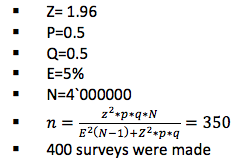
The investigation was made because despite the fact that emoticons and emojis have been part of the lives of users for some years, there are no studies on the behavior of the Ecuadorian market on the subject. That is why this research will serve as a starting point to understand the use and preferences in the national market.
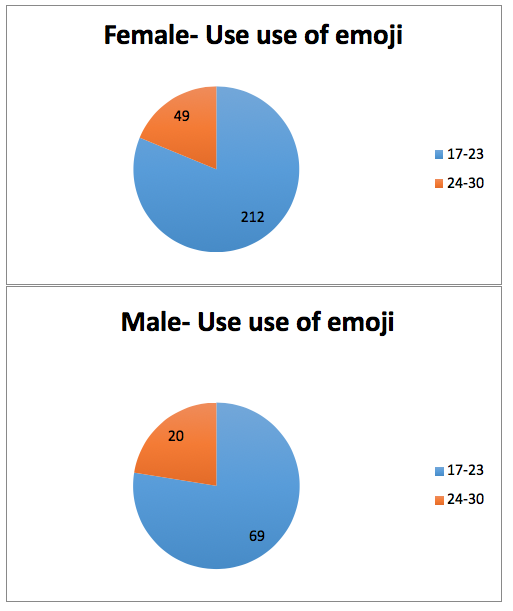
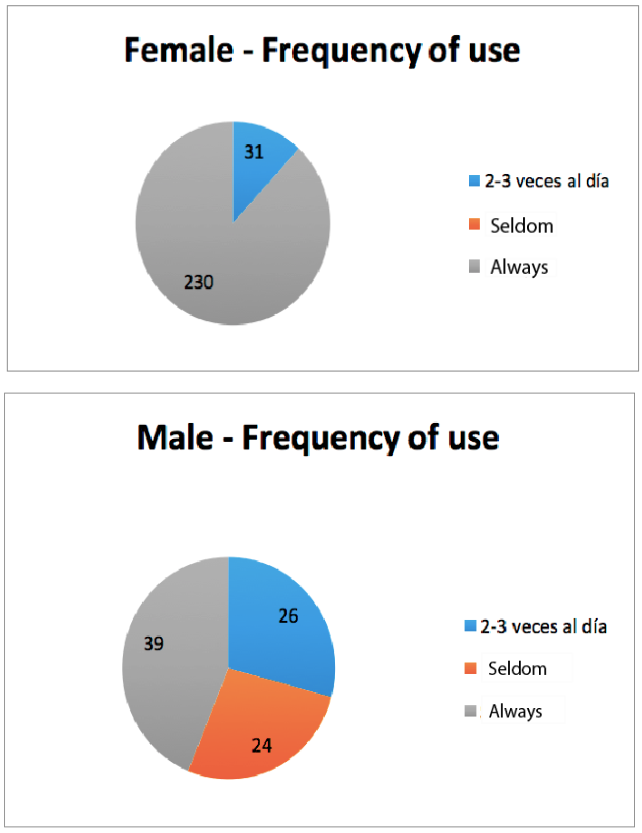
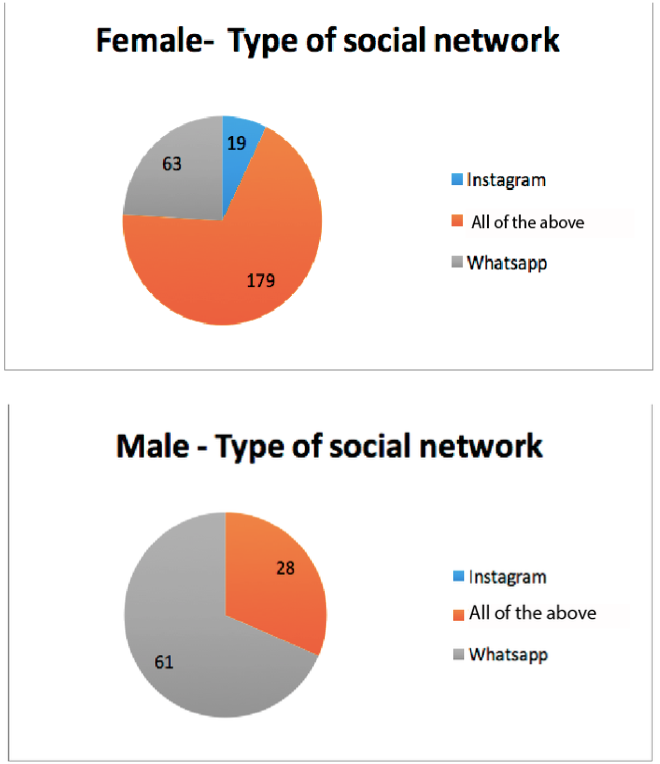
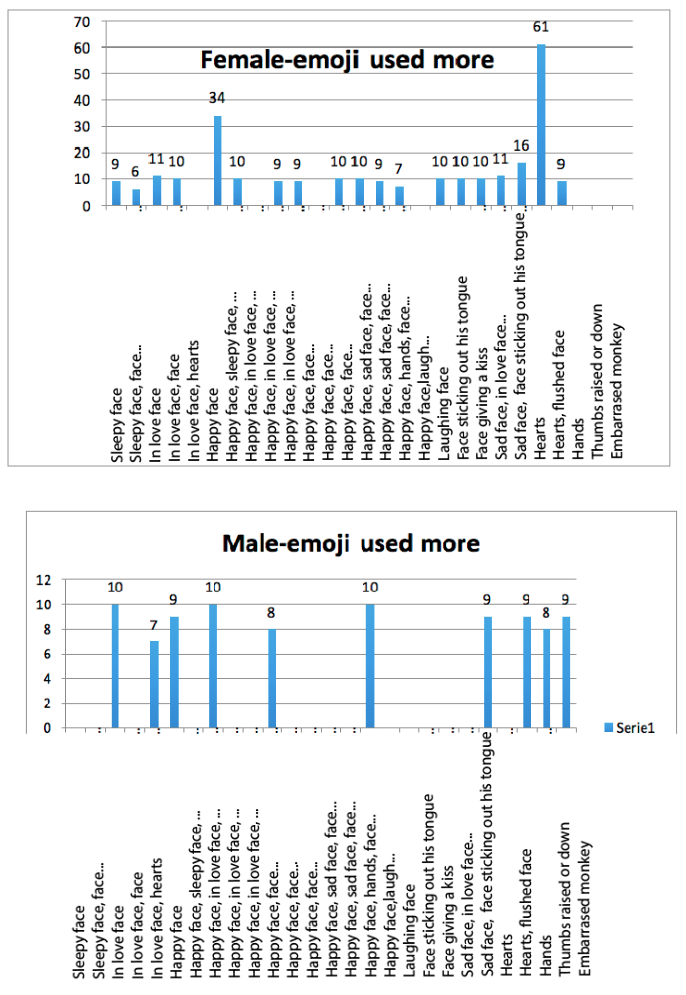
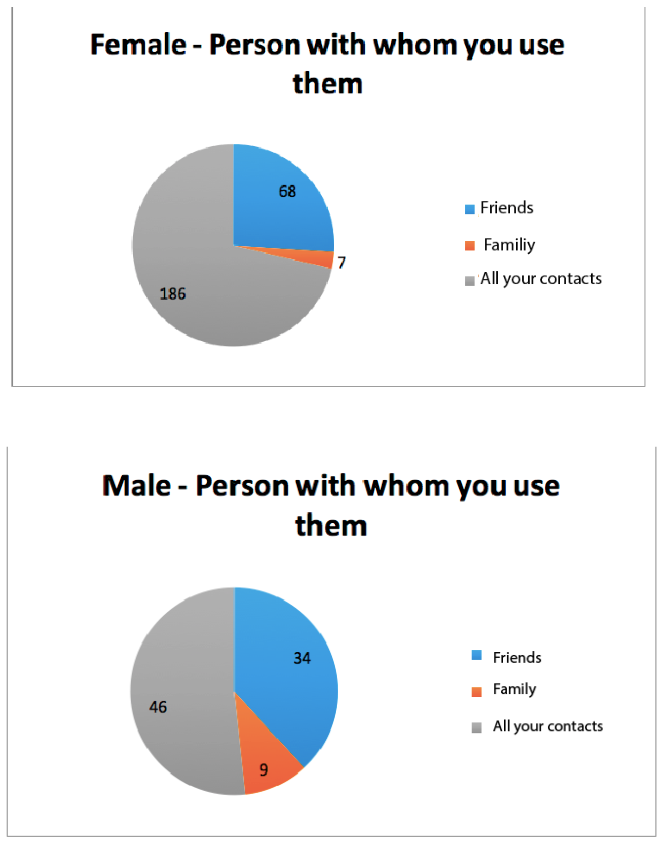
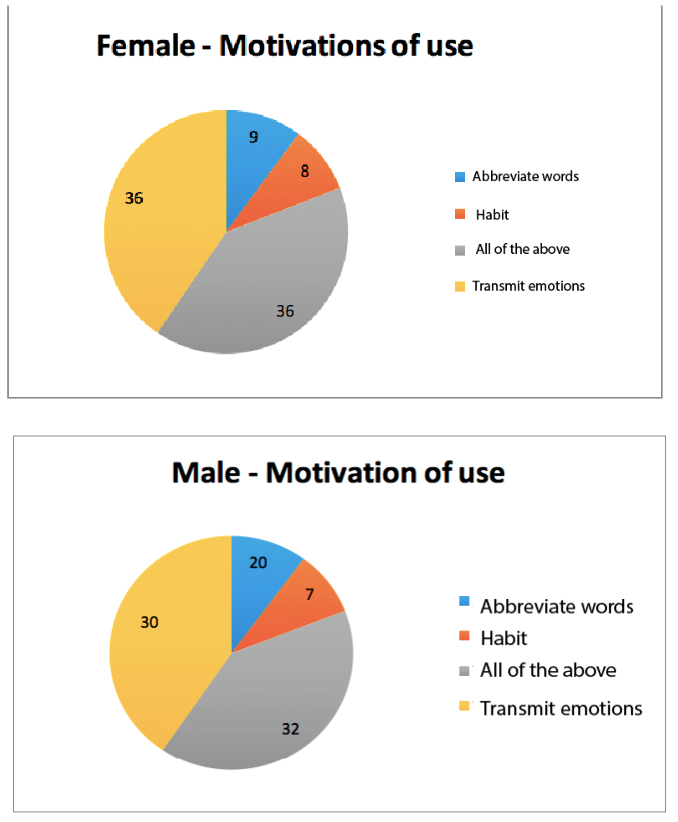
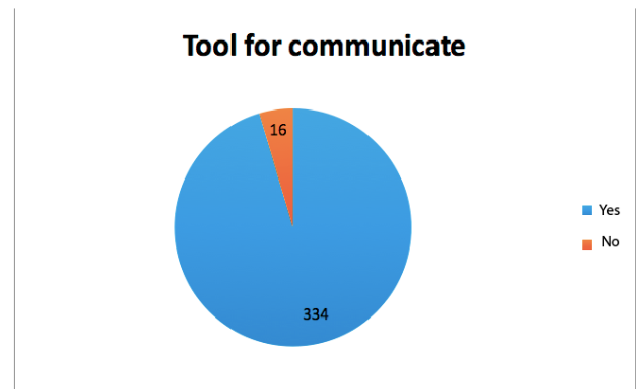
Question |
Selected options |
Options less selected |
Do you use emojis? |
Yes |
No |
How often do you use them? |
Always |
Seldom |
In what type of social network do you use them? |
All of the above (Facebook, Instagram, Twitter, Whatsapp) |
Facebook(0) |
Which emoji do you use the most? |
Hearts |
Sleepy face |
With whom you use them? |
All my contacts |
Family |
Why you use them ? |
They transmit emotions |
Abbreviate words |
Do you think that they are a tool that help you to communicate? |
Yes |
No |
Emoji figurines, emoticons that moves. Yes, use Rarely. They are not necessary. Only when something makes you laugh. Eyes up, laugh. Whatsapp. He uses them by habit. With whom do you use emoticons? Labor scope no. Just friends. Not mom. He says he does not use, but on Instagram all posts have emojis.
Yes, use at the end of the sentence. Post of Instagram always and some, I feel that it is incomplete without emojis. When you write work letter you want to use emojis. With mom no, only when it's laughing. With friends and cousins always. If they remove emojis, I would use the emoticons again.
Yes, only with my skin. I'm lazy to use and more out of obligation, so she does not think I'm dry. More used: hearts, More with women, not with men because it feels unmanly. Little with family only when he wants something in return. Zero emoticons.
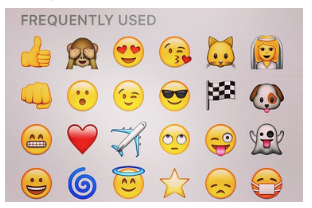
To begin it is necessary to mention the importance and the change that emoticons and emojis represent today in communication. These are used as forms of expressions of feelings, actions, situations, etc. The definition of them varies according to the authors but what is certain is that nowadays these are used as a form of communication and also the emoticons are handled by the vast majority of the population around the world that communicates through the internet.
It is because of this that it can be said after the study that it has been found that the emoticons have presented an evolution over time, starting from the simple use of punctuation marks to seeing what they have become now, predetermined images that refer to the expressions of human beings or symbolisms of objects that serve to better express the message that is desired.
What is a reality is that today the use of emojis also represents a way of giving the message in a more subtle, clear and in most cases in a more friendly way. Likewise, it is important to say that users who use emojis in their communication with others do so in order to abbreviate the messages, that is, they substitute the word for the emoticon in some occasions.
Also, it can not be denied that, emojis have been changing over time, because these have become more specific, more colorful, more striking, etc. However, it can not be determined if the expression shown through them is sincere, that is, the emojis represent a specific action or emotion but some authors state that not always the emojis that are used show the feelings as such. user feels them or wants to transmit them.
On the other hand, through this research it can be determined that the use of emojis is frequent, however, the type and amount of emojis that are used usually depends on the age and country of origin of the person. Other studies have established that countries such as Peru, Mexico, Bolivia, among others, the use of negative emojis or sad faces are the most frequent.
Also, this new trend or form of communication becomes more frequent with the pass of the time, however, we must mention that for some users this way of transmitting messages nowadays is harmful as it can cause some misunderstandings at the time of communicating, for example: individuals have different degrees of courage, joy, doubt, etc. therefore the message through these emojis may be overestimated or may be misinterpreted in some cases.
Another negative aspect that can be concluded through this research is that the use of emojis and emoticons over time lose their true meaning, because as mentioned above, the pictures or images that replace the words will be interpreted from a different way therefore when a user uses a red heart, for some it may be a "I love you" but for others it may be a "I love you".
Despite this, it can also be concluded that there is nothing wrong with people using emojis today in order to replace certain words, since since human beings communicate in a written or verbal way the changes in the communication have been part of this great phenomenon, so that emojis can be considered as another change within communication. It should be remembered that all changes bring their positive and negative aspects.
It should be taken into account that emojis is still an informal communication tool, therefore, it is not recommended to use them in formal writings, in emails or conversations with people with whom there is a formal form of communication.
Despite the negative side about the use of emojis in communication, it is important to note that the interviewed users defined that they use emojis in most of their conversations, with any person, that is, it is not necessary to have a relationship staff to apply them and that a large percentage considers them a communication tool necessary today.
Finally, the authors agree that emojis are figures that serve so that communication between people can occur in a more real way. In fact, emojis have become a tool in this digital age. On the other hand, the focus group and the survey made known the perceptions that Ecuadorians have where everyone indicates that they have used emojis at least once. In fact, of all the respondents there was not a single negative response to the use of emojis.
It is worth mentioning that although it is true that some individuals are against the use of emojis in conversations for various reasons, it is also true that the vast majority of people who use a social network or instant communication use this type of communication. In addition to that most people see it as a positive change in communication and as a tool to communicate with other human beings.
Barrientos, Cristal. Las personas recurren a los emoticones y lenguaje chat. 08 de Septiembre de 2010. https://www.elsiglodetorreon.com.mx/noticia/554700.emociones-comprimid-s.html.
Chemi, Eric, y Nick Wells . Emojis changing the way people and businesses communicate. 17 de Julio de 2017. https://www.cnbc.com/2017/07/17/emojis-are-coming-apple.html.
Danesi, Marcel. The Semiotics of Emoji: The Rise of Visual Language in the Age of the Internet. 2016.
de la Torre Galvis, Javier. 30 de Agosto de 2014. https://www.semana.com/vida-moderna/articulo/el-lenguaje-de-los-emoticones/400934-3.
Doral Times . La Influencia De Los Emojis En La Comunicación Actual. 20 de Junio de 2016. http://www.doraltimes.com/la-influencia-de-los-emojis-en-la-comunicacion-actual/.
Evans, Vyvyan. The Emoji Code: How Smiley Faces, Love Hearts and Thumbs Up are Changing the Way We Communicate. 2017.
Gander, Kashmira. How emojis are helping us to communicate better than ever? 03 de Octubre de 2017. https://www.independent.co.uk/life-style/emoji-iphone-android-communication-better-than-ever-defence-a7980496.html.
Lipschultz, Jeremy Harris. Social Media Communication: Concepts, Practices, Data, Law and Ethics. Segunda edición. Routledge, 2018.
López, Erika. «Caracterización de las funciones de los emoticones en interacciones virtuales en chat abierto.» Pontificia Universidad Javeriana. junio de 2009.http://www.javeriana.edu.co/biblos/tesis/comunicacion/tesis263.pdf.
Lucas, Gavin. The Story of Emoji. 2016
Muñoz, A. Emoticones . 16 de Diciembre de 1999. http://www3.uah.es/vivatacademia/anteriores/cinco/ciberman.htm.
Rodríguez Molina, Carlos. Los científicos investigan el significado porfundo de los emojis. 18 de Enero de 2017. https://www.tuexperto.com/2017/01/18/los-cientificos-investigan-el-significado-profundo-de-los-emojis/.
Ruiz del Corral, Manuel. Ser digital: Hacia una relación consciente con la tecnología. Kolima, 2017.
Sampietro, Agnese. «Emoticones y emojis: Análisis de su historia, difusión y uso en la comunicación actual.» Universidad de Valencia . 2016. http://infoling.org/repository/PhDdiss-Infoling-83-5-2016.pdf.
Shah, Khushbu. How to Order Domino's Pizza With a Pizza Emoji. 13 de Mayo de 2015. https://www.eater.com/2015/5/13/8597819/how-to-order-dominos-pizza-emoji.
1. Director Académico de la Facultad de Comunicación en la Universidad de Especialidades Espíritu Santo, Máster en Diseño & Branding, esalas@uess.edu.ec
2. Profesora Titular de la Universidad Politécnica de Valencia y Directora del Observatorio de Nuevos Medios, Doctora en Comunicación Audiovisual, mcabrera@upv.es